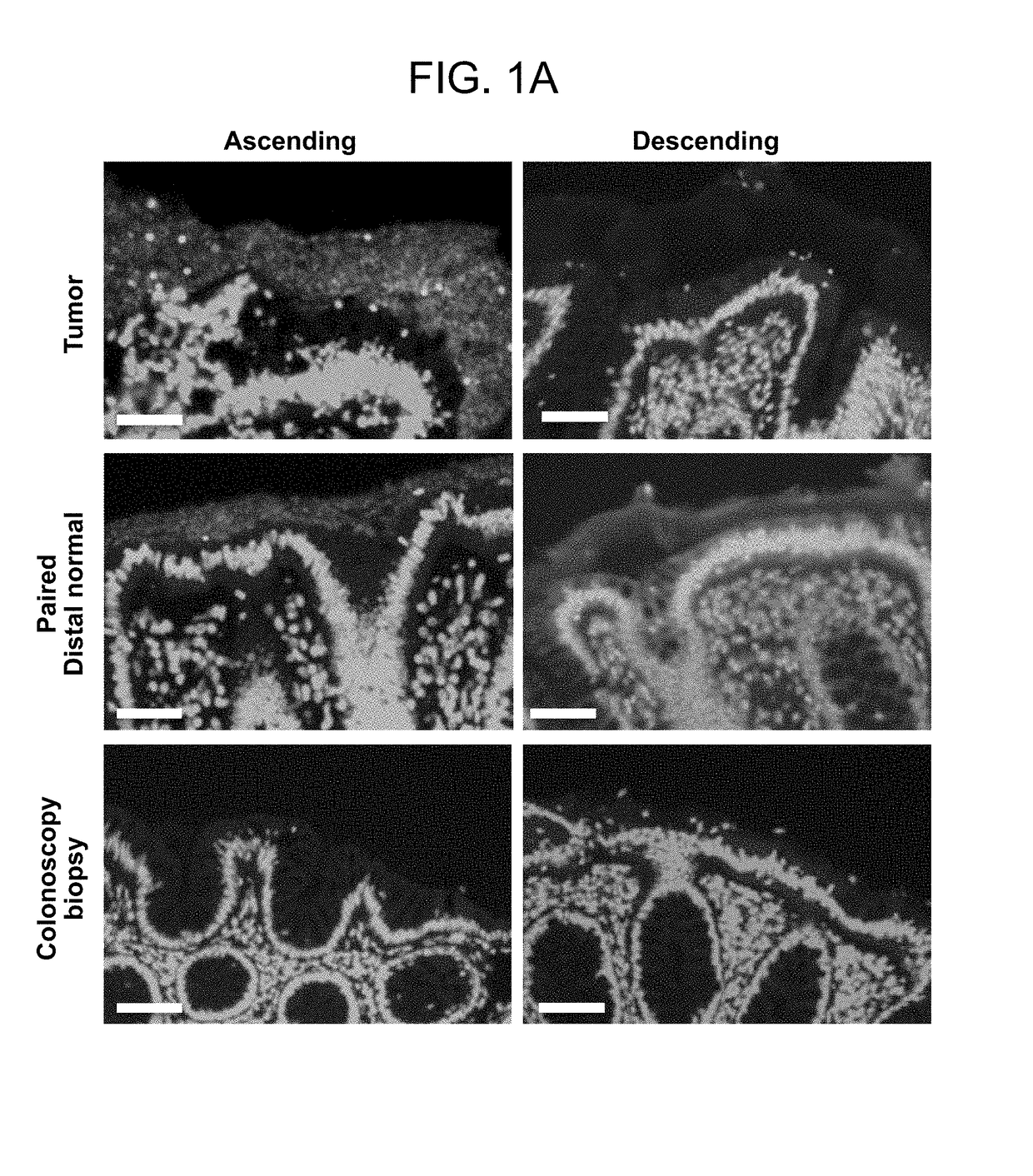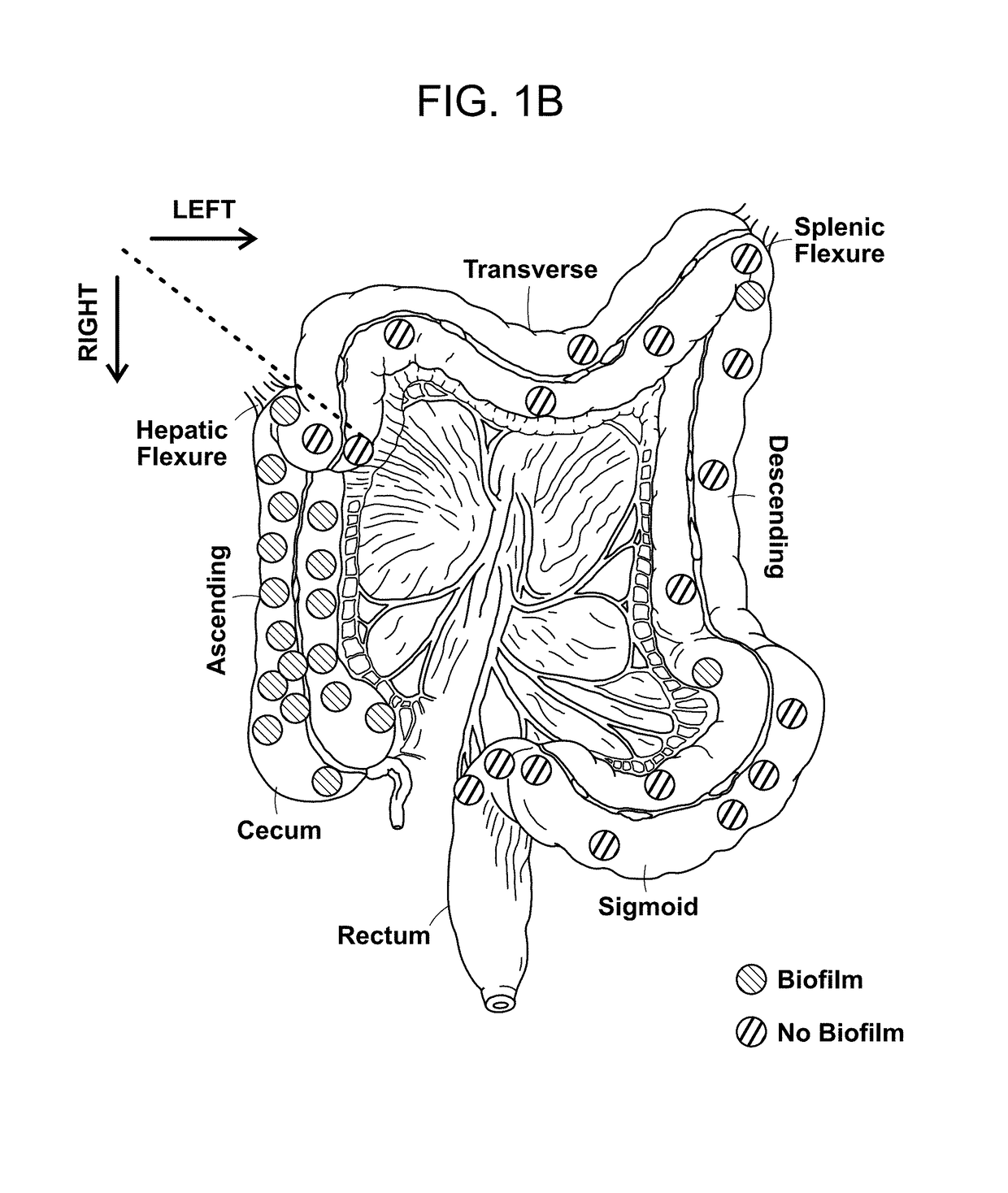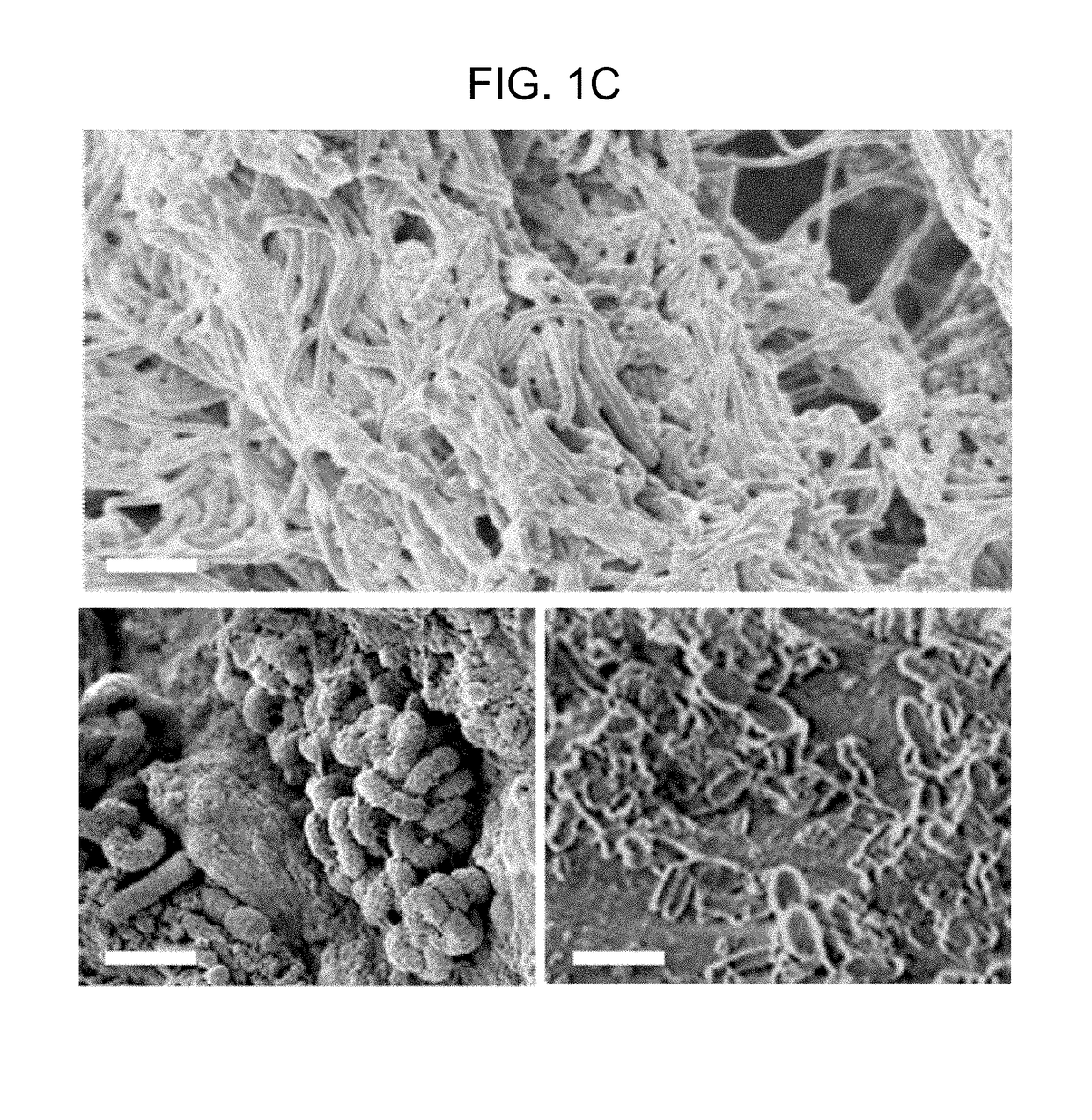Biofilm formation to define risk for colon cancer
a technology of colon cancer and biofilms, applied in the field of biofilm formation to define the risk of colon cancer, can solve the problems that the association between the composition of microorganisms and crc development has not been established, and achieve the effects of reducing the apoptosis of colonic epithelium, eliminating biofilms, and increasing proliferation
- Summary
- Abstract
- Description
- Claims
- Application Information
AI Technical Summary
Benefits of technology
Problems solved by technology
Method used
Image
Examples
example 1
and Methods
Patient Selection / Sample Acquisition
[0126]CRC and paired normal tissue were collected from patients undergoing surgery at Johns Hopkins Hospital. All tissue not needed for pathologic diagnosis was rapidly preserved in formalin, Carnoy's solution and RNAlater for analysis. Patients who received pre-operative radiation and / or chemotherapy or with a personal history of CRC were excluded. For patients in this study, two bowel preparations were routinely used and recorded (mechanical bowel preparation [Miralax™], or Fleet Phospo-Soda™ enema), Pre-operative intravenous antibiotics were administered in all cases (cefotetan or clindamycin / gentamycin). No patient received pre-operative oral antibiotics.
[0127]Healthy control patients undergoing screening colonoscopy or colonoscopy for diagnostic work-up (eg, anemia) were recruited and signed informed consent. All patients underwent a standard mechanical bowel preparation (FIGS. 10A-C). Mucosal biopsies from grossly normal colon wer...
example 2
ation of Microbial Biofilms Associated with Colorectal Tumors (CRC & Adenomas Examined)
[0145]The microbial communities associated with surgically-resected colorectal tumors (CRC and adenomas) and paired normal tissue collected from the pathologically tumor-free mucosa at the surgical resection margin were systematically examined. Paired normal colon tissues were obtained from the margin of the resected specimens furthest from the site of the tumor (FIG. 4). In addition, as a healthy control population, colon biopsies obtained from individuals without colorectal tumors and without a diagnosis of inflammatory colonic disease undergoing routine screening colonoscopy were studied. FIGS. 9 and 10A-C present all patient metadata.
[0146]The spatial relationship of the microbiota was first compared with the host mucus layer and colonic epithelium using fluorescent in situ hybridization (FISH). Carnoy's solution-fixed, paraffin-embedded tissues known to preserve the mucus layer were employed....
example 3
ization of Microbial Biofilms Associated with Colorectal Tumors
[0147]To determine if biofilm formation was specific for the tumor microenvironment, we next used FISH to examine the paired pathologically normal colon tissues obtained from the surgical resection margin most distal from the tumor mass (FIG. 4) for biofilm formation. No biofilms were detected on the distal pathologically normal surgically-resected colon tissues paired with biofilm-negative tumors (adenomas and CRCs). In surprising contrast, all but one distal pathologically normal surgically-resected colon tissue paired with a biofilm-covered tumor were biofilm positive whether in the right or left colon; thus, 93% (14 / 15) and 100% (4 / 4) of paired pathologically normal colon tissues from the surgical resection margin of biofilm-covered CRCs and adenomas, respectively, were biofilm positive (FIGS. 1A and 1D). Of note, the single surgically-resected distal normal tissue on which we failed to detect a biofilm was fixed in ...
PUM
 Login to View More
Login to View More Abstract
Description
Claims
Application Information
 Login to View More
Login to View More - R&D
- Intellectual Property
- Life Sciences
- Materials
- Tech Scout
- Unparalleled Data Quality
- Higher Quality Content
- 60% Fewer Hallucinations
Browse by: Latest US Patents, China's latest patents, Technical Efficacy Thesaurus, Application Domain, Technology Topic, Popular Technical Reports.
© 2025 PatSnap. All rights reserved.Legal|Privacy policy|Modern Slavery Act Transparency Statement|Sitemap|About US| Contact US: help@patsnap.com



